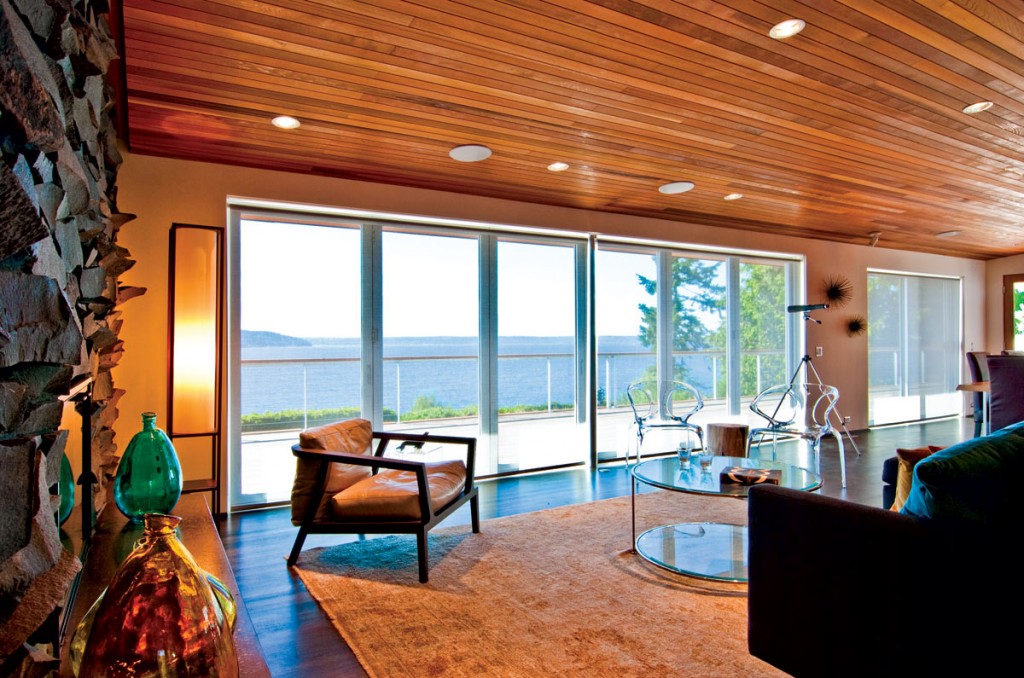Glass wall systems aren’t just a trend; they’re a no-brainer. Experts explain why.
In theatre and film, “breaking the fourth wall” describes when an actor speaks directly to the audience. In many ways, adding a glass wall system to a house achieves the same effect: It allows homeowners to interact with what they very well could not before.
A glass wall transforms an outside space into an extension of the inside, so for owners of oceanfront homes, including a glass wall system should be a given, particularly if the wall is contiguous to a patio area. The trend is maturing for both modern and more traditional homes, says Matt Thomas of Corte Madera, CA-based NanaWall Systems. “The kind of system is dependent on where your home is,” he says. “We have systems better [attuned] to warmer climates [or] extremely cold climates.”
Beachfront properties deal not just with wind, but also with wind elements. For instance, in Southern California or Gulf Coast climates, the air is heavy in moisture and salt content, so a stainless-steel system is preferable. “The hinges and handles resist the elements, plus, our seals keep the elements out of the house and protect the hardwood in the jambs of each panel,” Thomas says.
Hans Galutera, a designer at New York’s BG Studio International, employs glass wall systems, which can be framed in aluminum or wood, whenever possible. “It’s like a big accordion that unfolds,” he says. “It’s so flexible.”
Cost is the only concern. “A French door would cost half the amount,” Galutera says, though he makes a good point: Who wants to see moldings, structure, and columns? “A wall that can open 20 feet across is a no-brainer,” he says. “It makes a room feel bigger—like you’re outdoors.” (Galutera says glass wall system pricing is around $600 per lineal foot, but varies depending on product.)
LaCantina Doors in San Diego is another manufacturer of glass wall systems, and Lee Maughan, its general manager, says the product is all about a certain lifestyle, about open living. “It can make an indoor space feel bigger and make a deck part of the living space.” Glass walls run on track systems, which make them a snap to slide open and closed, and while some homeowners might think a glass wall could lend itself to draftiness, there’s actually little cause for concern.
“[The doors] are really insulated and protected with gaskets,” Galutera says. They’re also a way to cut down on utilities, explains Thomas. “When it’s warm out, you can cool the home by opening the panels and flushing the entire home very quickly, but when closed, the outside element is sealed off,” he says.
“It creates natural air flow through the home,” adds Maughan.
The NanaWall Kitchen Transition The NanaWall Wood Framed Folding System WD66 Window/Door Combination combines NanaWall folding glass window and folding glass wall systems, seamlessly turning an existing kitchen into an indoor/outdoor entertainment space. NanaWall has certified installers, and when a contractor or homeowner chooses the company’s installation team, the warranty is doubled. Pricing is on a customized basis.




